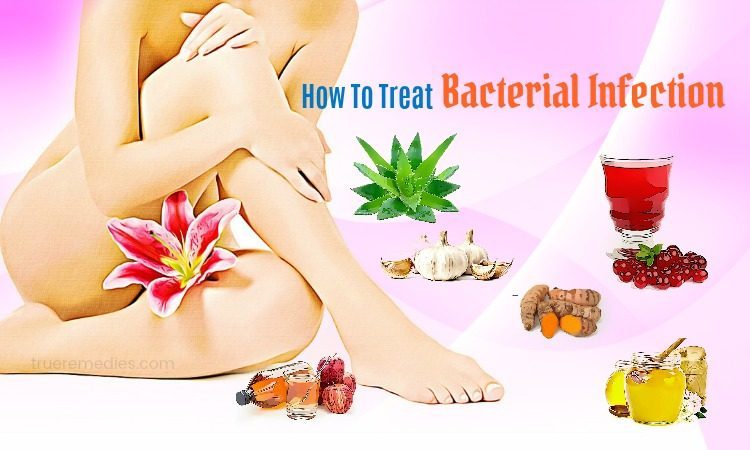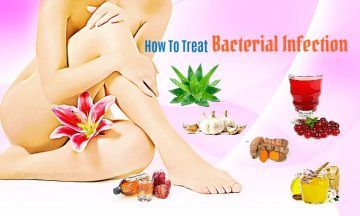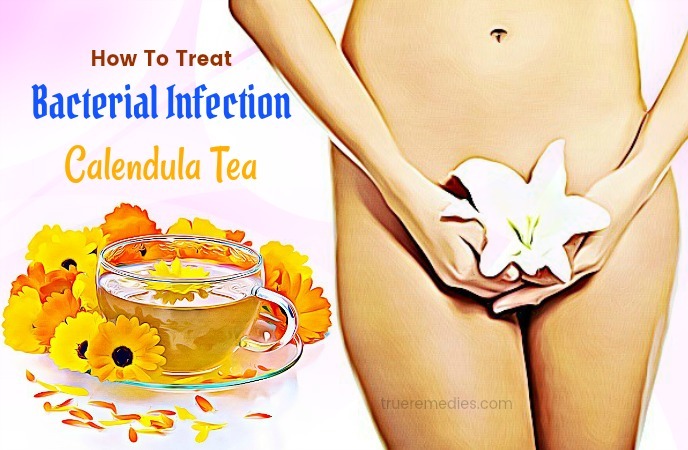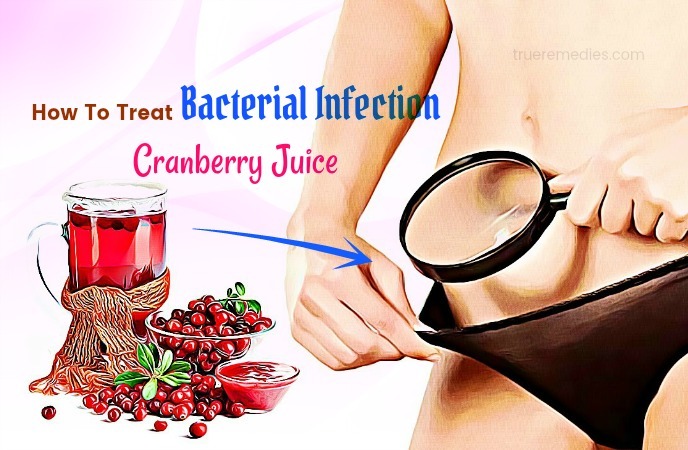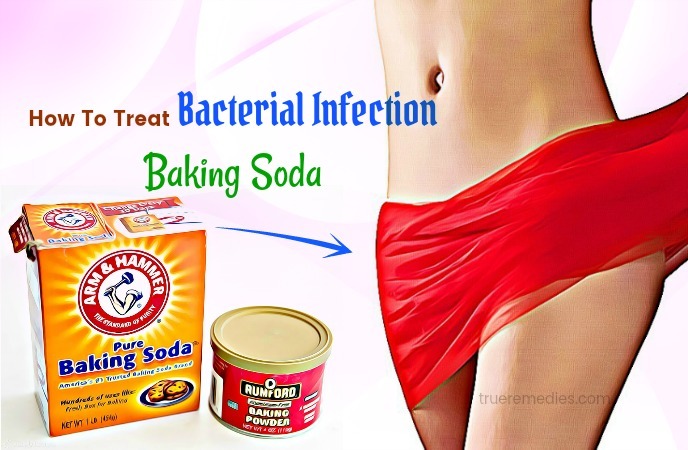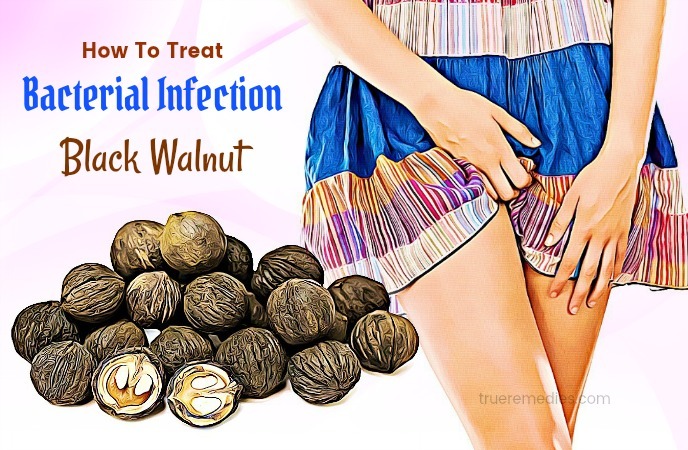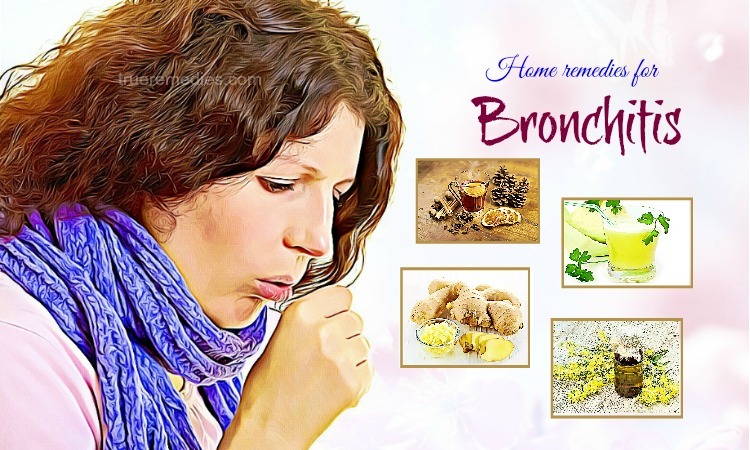Updated: 11/21/2019
CONTENTS
Bacteria are single-cell microscopic organisms living nearly everywhere. They live in every location and climate on our earth. Some of them are airborne while others live in soil or water. Bacteria live both inside and on plants, people, and animals. Although the word “bacteria” comes with a negative connotation, they actually perform a lot of vital functions for the organisms and in the environment. For instance, plants need bacteria available in the soil to grow. However, a bacterial infection is often a proliferation of the harmful strain of bacteria inside or on the human body. When it comes to bacterial infection on the skin, there are many types of bacteria infecting the human skin. Bacterial infections could lead to many conditions. Infections happen because the bacteria break into the human body and develop on the skin.
To treat the bacterial infection on skin without antibiotics, you first need to define symptoms of bacteria and risk factors of this condition. This entry made by TrueRemedies.com will expose to you all of such things.
- 22 Home Remedies For Skin Fungus On Hands, Thighs & Legs
- 22 Home Remedies For Staph Infection On Face & Scalp
- 23 Best Home Remedies For Cellulitis Infection On Legs
What Are Symptoms Of Bacterial Infections?
The symptoms of bacterial infection will depend on the area of the affected body. Sometimes, bacterial infections may be misunderstood with viral infections because their symptoms are rather similar. Some common symptoms are:
A doctor might use the presence of a few other symptoms like body aches or a fever, the duration of the illness, and specific lab tests to help determine if an ailment is because of a bacteria, virus, or other disease or pathogen process.
What Are Causes Of Bacterial Infections On Skin?
Bacterial skin infections are often caused by Streptococcus and Staphylococcus or other organisms. Some of the common bacterial infections on the skin include:
TrueRemedies Partner Solutions

Need a Help from the Leading Expert Online, Available 24/7?
They’re all here and ready to answer your questions online or by phone. Keep asking questions until you get the answer you need.
- Cellulitis: this condition causes a red, painful infection which is often warm to the human touch. It happens on legs, or anywhere else on the body.
- Folliculitis: this is an infection of the hair follicles causing swollen, red bumps which look like pimples. If you use hot tubs or improper treated pools, they might harbor bacteria causing folliculitis.
- Impetigo: this problem causes sores, often in those children are under school age.
- Boils: they are deep skin infections starting in hair follicles. Boils are red, tender and firm bumps progressing until the pus accumulates underneath the human skin.
Normally, bacterial infections on the skin are treated with topical or oral antibiotics depending on the strain that causes an infection.
There is no science-based evidence for the following homemade recipes. The recipes we've focused on are traditional home remedies, so always consult your doctor and check out your health condition regularly.
How To Treat Bacterial Infection On Skin At Home Without Antibiotics – 36 Natural Ways
1. Probiotics
Among ways on how to treat bacterial infection on skin, this is a super efficient way. Probiotics operate on the human body by enhancing the number of good bacteria and decreasing both the amount and functioning of bad ones. You may take advantage of fresh yogurt with live culture to take probiotics. There have been many clinical trials over the years that looked at the efficacy of probiotics in the treatment of bacterial infections and bacterial vaginosis. And the results were very positive.
Alternatively, use probiotic supplements. Probiotics are best for handling urinary tract infections, bacterial infections on the skin, intestinal and stomach infections[1]. In the US, most probiotics are sold as common dietary supplements, which do not undergo the strict testing and approval process that most drugs do. Manufacturers are specifically responsible for the safety of their products before they are marketed and that the claims presented on the product label are true. However, there is no guarantee that the bacteria types mentioned on the label are effective for the problem you are using them for. Thus, it is always better to consult your healthcare provider to know what you are doing.
Read more: 22 Natural Home Remedies For Staph Infection On Face & Scalp
2. Turmeric
Turmeric has antiviral, antimicrobial, antibacterial properties, making it a powerful natural herbal alternative for infections. Actually, turmeric and its active compounds (particularly curcumin) are often used in traditional Ayurvedic medicine for disinfectant and antiseptic solutions. The anti-inflammatory activity of turmeric could decrease the risks caused by infections while immune-boosting effects may block the opportunistic microbes[2]. Also, its high antioxidant content prevents the development of infections effectively. You may make use of turmeric powder in two methods:
Method 1:
- Take a proper amount of freshly ground turmeric to mix with water so you may get a fine paste
- Apply the paste over your affected skin and wait for 30 minutes to wash it off
- Repeat this routine twice per day to get good results
Method 2:
- Add 1 teaspoon of turmeric powder in a glass of warm milk
- Drink this solution daily
This method is often used as a preventive for bacterial infections of the body, including skin.
3. Honey
Thanks to the mild antiseptic effects, honey is a natural solution for the skin as well as respiratory infections triggered by bacteria. It also helps heal and soothe your affected area. Honey has a sprinkle of a protein named bee defensin – 1. It is a part of the immune systems of the bees designed to protect them from bacteria, particularly those causing disease. In accordance with a study carried out in 2011, honey was able to treat skin infections and burns, making it a potent natural antibacterial solution . Ultimately, the ingredients found in honey are the nightmare of bacteria. However, parents should abstain from feeding their young babies (under 1 year old) because it is not good for such children.
To get the most benefits of honey, you should use an organic form. Mixing honey and ginger tea will assist you in soothing irritated throats because of cough. Also, honey is used for inhalation and opening up the blocked nose[3].
To use honey for bacterial infections, you should apply it over your skin to accelerate healing and prevent bad bacteria from getting into the open wounds or through scratches or cuts on the skin.
4. Tea Bags
Because tea contains polyphenols, which have anti-inflammatory in nature, it helps decrease the inflammation caused by bacteria. You may take advantage of a chamomile tea bag because many studies have proven that it is an effective natural topical medication for bacterial infections[4]. Take the steps here:
- Soak a tea bag in tepid water for 15 minutes
- Keep it in the fridge for a few minutes till it cools down
- Apply it over your affected skin area to relieve itching
- Repeat this method 3-4 times per day for a few weeks
5. Folic Acid
Add more folate-rich foods to your daily meal plans to protect yourself from problems related to bacterial infections. Such foods include avocado, dark leafy greens, broccoli, asparagus, spinach, etc.[5] [6]
6. Fenugreek Seeds
Because fenugreek seeds have anti-inflammatory properties, they are one of the best cures for bacterial infections on the skin[7].
Follow these instructions:
Method 1:
- Soak 2 tablespoons of fenugreek seeds in a glass of water
- After that, the next morning, drink the mixture before having breakfast
- Do this method daily for 1 month or so to see good results.
Method 2:
- Add 1 teaspoon of fenugreek powder in a full cup of yogurt
- Have it twice per day
Method 3:
- Mix 1 teaspoon of fenugreek seeds with 1 cup of hot water
- Wait for 5 minutes, then add honey to flavor it
- Drink it 2-3 times per day
7. Calendula Tea
Take a handful of calendula leaves to boil up some water, so you will get calendula tea. Then, take a clean cloth to soak in the tea. Next, rub this cloth to your affected area to relieve redness and irritation caused because of bacterial infections[8].
8. Aloe Vera
The next tip on how to treat bacterial infection on skin is using aloe vera. This popular plant has natural anti-inflammatory and antibacterial properties, not to mention medical and healing effects[11]. Also, aloe vera may cool off the human body and boost its immunity.
You may use aloe vera gel extracted from fresh aloe vera leaves to treat internal infections, urinary tract and vaginal infections, bacterial infection on the skin, etc. It could be applied right directly on the infected area. Besides, consuming ¼ cup of juice made from aloe vera is also good for your process of treating bacterial infections on the skin.
9. Cranberry Juice
According to a study published in the official publication of the College of Family Physicians of Canada in 2012, cranberry juice was effective in treating bacterial infections[12]. Current evidence proves that this juice could also be used to prevent UTI in females, but there is no evidence supporting children’s cases.
You should take advantage of fresh, not canned cranberry juice to get optimums benefits. It is safe for pregnant or breastfeeding women. Nonetheless, in spite of its safety, its acidity level might still reduce the palatability among children.
10. Apple Cider Vinegar
Thanks to its strong anti-inflammatory and antibacterial properties, apple cider vinegar could be effective in treating a host of bacterial infections by maintaining the pH balance or correcting the imbalance inside the body[13]. Also, it prevents bacterial action from sustaining in the infected area.
You may apply apple cider vinegar directly to your skin, but it is highly recommended to dilute it before using, particularly if you have sensitive skin. For internal infections, follow these steps:
- Put 1 teaspoon of apple cider vinegar into 1 cup of water
- Take it with the directions of your herbalist.
11. Tea Tree Oil
Herbalists have used tea tree oil for hundreds of years to handle a myriad of illnesses including bad breath, acne, dental plaque, dandruff, thrush, athlete’s foot, nail infections, genital herpes, burns wounds or MRSA. This oil is claimed to help lessen the itching caused by bacteria or yeast. One small study reported that using only tea tree oil could help to treat bacterial vaginosis[14] [14’]. You should always have a consultation with your physician prior to using this oil to treat any illness.
Tea tree oil could be applied to the human skin or simply smeared in the vaginal canal for damaging the action of bacteria. However, remember to dilute it with water before using to avoid burning your skin. Because this oil is potent, it could be used to treat and control chronic infections without adverse effects.
Cautions:
- Some people might develop an allergic reaction to this oil, such as skin irritation or blistering rashes
- Some reactions to oral tea tree oil include gastrointestinal disturbance, autoimmune disorders, drowsiness, lethargy, severe rash, confusion, coma or uneven gait.
12. Garlic
Garlic is one of the simple ways on how to treat bacterial infection because it is very easily available in our kitchens. Garlic is used to treat many fungal and bacterial infections of the human body. Take 4-5 garlic cloves per day to keep the bacterial attack at bay and also treat bacterial infections of the digestive, respiratory, skin and urinary tract.
You may use garlic for bacterial infections in many ways. But, the best way is chewing them in the raw form. One study noted that taking garlic supplement tablets could treat bacterial vaginosis[15]. However, they are not as effective as the raw form. Or, you may use garlic tea to reap similar benefits. Here is how to make garlic tea at home:
- Boil several cloves of garlic in water for a few minutes
- Let it steep for 10 minutes before straining it
- Drink it twice per day to get good results
13. Ginger
Often used for stomach and respiratory infections caused by bacteria, ginger is also helpful in treating bacterial infections on the skin. Ginger may heat up the human body and boost blood circulation, thus decreasing the operation of bacteria within the body. It is thanks to the compound known as gingerol in ginger, which has been shown to alleviate infections, particularly those in the mouth[16]. You may use ginger by making ginger tea and consuming 3-4 times per day, or you may also take advantage of ginger extract to massage your affected skin area and control pain. By taking a stalk of fresh ginger daily, you will prevent infection of the body.
Learn more: 24 Natural Home Remedies For Chlamydia Itching And Infection
14. Baking Soda
The next tip on how to treat bacterial infection without antibiotics, baking soda is your answer. The alkaline property of baking soda may change the environment that bacteria are thriving in. Also, it may balance the pH levels of the body. Baking soda may work as an antifungal agent dehydrating and killing the bacteria and fungus causing mouth infections[17]. Using baking soda may keep your skin clean and dry. There are a few ways to use baking soda for bacterial infections. Some of them are:
Method 1:
- Mix ½ teaspoons of baking soda with 1 glass of water
- Stir well till it dissolves entirely
- Drink the mixture twice per day before having a breakfast
- Repeat this routine for 2 weeks and take a rest for another 2 weeks
Method 2:
- Mix 2 tablespoons of baking soda with a proper amount of water to have a good paste
- Apply the paste over your affected skin and wait for a few minutes
- Wash it off with water before patting it dry
- Repeat this routine daily
Method 3:
- Put 1 teaspoon of baking soda in 250 ml of water
- Let it dissolve entirely and soak a cotton ball in the solution
- Apply it over your affected area
- Or, you may use this water to apply on your skin to reduce inflammation, irritation, and redness.
Method 4: Have a bath with baking soda
Baking soda may relieve you from external itching as well as other symptoms. Take the steps below:
- Add ½ – 1 cup of baking soda to your bath water (warm)
- After stirring well, soak your body in this solution for 15 minutes
- Use a clean cloth to dry your skin
- Repeat this 2 times per day
This method is safe for pregnant women. To get faster results, you may add baking soda to salt bath water.
Method 5: Baking soda and tea tree oil
- Mix 2 cup of baking soda with a few drops of tea tree oil in the shallow sitz bath
- Fill the bathtub with warm water and stir well
- Soak yourself in this solution for several minutes
- Wash it off with water
15. Lemon
Lemon is effective in treating bacterial infections, particularly respiratory infections[18]. Thus, it is one of the great answers for those looking for ways on how to treat bacterial infection. Lemons may reduce mucus build up within your respiratory tract, which, in turn, helps remove bacteria trapped inside the mucous that cause infections.
16. Indian Lilac
Also known as margosa leaves, Indian Lilac has antimicrobial properties that contribute to making this plant a good remedy for bacterial infections[19].
- Add a handful of margosa leaves to a saucepan
- Heat it up for 3 minutes, then after they cool down, crush them to get a good powder
- Add a small amount of water to 2 teaspoons of that powder to get a good paste
- Apply the paste over your skin twice per day
- Repeat this routine for a few weeks
17. Triphala Powder
Similar to other ways on how to treat bacterial infection, triphala has anti-inflammatory properties which are important in combating infections[20]. You may prepare a decoction made from ficus racemosa, triphala, ficus religiosa, and neem bark. Then, put some borax powder into that mixture. That way, you will get a natural solution for bacterial infections by relieving burning sensation associated with this condition. It helps clean the affected area by applying to your skin thrice per day.
18. Black Walnut
Black walnuts are antibacterial in nature, so they are often used to fight all types of bacterial infections[21]. For bacterial infections on the skin, you just need to take advantage of black walnut through the following methods:
Method 1:
- Apply a tincture of black walnut to your infected skin area
- Wait for 15 minutes to rinse it off with water
- Repeat this routine twice daily for a couple of weeks
Method 2:
Or, you may also consume black walnut supplements daily to decrease the discomfort associated with this problem.
Cautions:
Black walnut is safe for occasional use of up to a couple of weeks at a time. But you should avoid those herbal remedies containing heartwood.
19. Goldenseal
A natural, powerful remedy for bacterial infections on the skin, goldenseal may be applied in the form of a tincture to your skin. It also strengthens the immune system of your body and alleviates bacterial actions[22].
20. Cat’s Claw
Cat’s claw may beat off harmful bacteria whilst its active ingredients named oxindole alkaloids may speed up the healing process[23]. You may consume this daily to get rid of bacterial infection symptoms easily.
There is no evidence for the below information and homemade recipes. So, they have not yet been confirmed or reviewed by any expert. These additional home remedies are collected from some highly appreciated sources. Give them a try.
21. Chilled Milk
Thanks to the lactobacilli present in milk, it may inhibit the development of pathogenic microbes responsible for the bacterial infection. You may take chilled milk in a bowl, and then soak a cotton ball into it to apply it over your skin. Wait for 1 hour before rinsing it off. Do this remedy once per day.
22. Coconut Oil
Because coconut oil is packed with antiviral and antibacterial properties, it may defeat the germs causing bacterial infections. You may use coconut oil according to this method:
- Apply organic coconut oil onto your affected skin area 3 times per day
- Rinse it off with water after 30 minutes
- Repeat this routine once per day
Alternatively, you could also add coconut oil to your daily diet whilst cooking to get better results.
23. Cold Compress
Take a clean cloth to dip in cold water. Apply it over your infected skin area so you may relieve redness, irritation, and swelling.
24. Fruit Juices
Consuming citrus fruits or drink the juices made from blueberry, cranberry, lemons, oranges, or grapefruits is a good way to ward off bacterial infections. Such fruits are rich in antioxidants. Therefore, if you are looking for ways on how to treat bacterial infections, do not hesitate to make your own fruit juices and take it on a daily basis to reap their benefits.
Caution: But, if you are getting pregnant or breastfeeding, then do not consume this herb.
25. Cedar Oil And Salt
It is shown that the efficacy of cedarwood oil is because of its antifungal agent. What you need to do is filling a bathtub with hot water, and then add several drops of cedar oil along with a pinch of salt into. Soak yourself in this solution for a few minutes so you may notice alleviation from burning sensation and redness.
26. Echinacea
Another good tip on how to treat bacterial infection is taking echinacea supplement. Furthermore, it also increases the immune system and helps your body fight against bacteria and viruses. To cure infections rapidly, you may take echinacea daily.
Notes:
- Do not use echinacea if you are allergic to those sunflower plants
- Consult your doctor for the right dosage.
27. Tracheal
You may mix 1 teaspoon of dried tracheal with hot water. Then, leave it there for steeping for about 10 minutes. Have it before your bedtime. As an alternative, you could also use this decoction to rinse off the vaginal canal when its temperature reduces.
28. Aroma Oils
You may combine myrrh oil, lavender oil, and kernel oil to get a mixture that may slow down the action of bacteria. These oils are antibacterial in nature which is effective in treating infections.
How To Treat Bacterial Infection On Skin – Do’s And Don’ts
Do’s:
- Keep your skin and dry
- Drink plenty of water during the day
- Go for a morning walk or practice yoga regularly
- Eat fruits like pomegranate, apples, musk melons, and papaya
- Take ample vitamin E
- Take more milk and cow’s ghee
Don’ts:
- Avoid using unnecessary cosmetics in the affected area
- Avoid drinking cold beverages and alcohol
- Limit the consumption of saturated fats like butter, lard, red meat, biscuits, and full-fat milk
- Stop smoking
- Avoid bathing in hot tubs
- Do not consume sugary foods, like white bread, chocolates, dairy products, puddings, and cheese
- Avoid greasy or fried food overly
- Avoid sweating too much
These are the top 36 best tips on how to treat bacterial infection on skin without antibiotics that are reported by many people. But, they are just for informative purposes. If you want to contribute any idea about this post, do not hesitate to leave your comments below this entry. For further references about similar topics, visit our How To page here.

